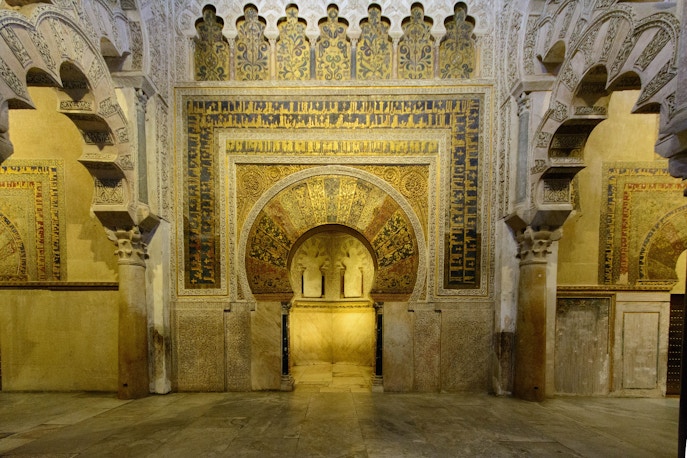The Great Mosque Of Cordoba: Former Islamic Mosque & Catholic Cathedral
Did you know that Cordoba Mosque, officially known as the Mezquita Cathedral, was originally built in the 8th century during the height of Moorish rule in Spain? This architectural marvel blends Islamic...
Also Known As
Mezquita Cordoba
Founded On
988

Quick information
RECOMMENDED DURATION
4 hours
Timings
10 AM - 7 PM
VISITORS PER YEAR
1500000
TICKETS
From € 13
UNESCO YEAR
1984
Fun facts
The Cordoba Mosque was initiated in the 8th century by Emir Abd ar-Rahman I on the site of a Christian Visigothic Church, Basilica of San Vicente Mártir, as part of his vision to elevate Cordoba as a center of science, culture, and arts.
In 1236, Ferdinand III of Castile conquered Cordoba, leading to the reconversion of the Mosque-Cathedral into a Christian church. Rather than demolishing it, Christian rulers opted to preserve and enhance its beauty with new spaces and monuments.
The focal point of the Mosque-Cathedral is its shell-shaped prayer niche, built in the 10th century. Unlike traditional mihrabs facing Mecca, Cordoba's mihrab faces south, resembling the orientation of the Damascus Mosque.
How to buy tickets for the Great Mosque of Córdoba?
What To See at the Córdoba Mosque?

The Córdoba Mosque stands as an example of a blend in culture and architecture of the east and west. Its architectural design has Islamic art forms uniformly blended with Christian elements.
The architectural choices like the double arches, the horseshoe arch with a semi-circular arch atop it, designs with red brick and stone, are some of the key architectural elements that are world-famous.
The bell tower, Patio de los Naranjos, Mihrab, and the Prayer hall are some of the major highlights with amazing works of art and architecture. Patio de los Naranjos serves as an entrance to the mosque featuring a courtyard with flourishing trees and flourishing fountains. The 54m tall Belltower of Mezquita de Córdoba provides an astounding bird’s eye view of the city.
The Great Mosque of Córdoba Facts

- During the reign of King Charles V, he got the Capilla Mayor, a cathedral nave built into the Mosque, which is said to have been his regret later on as he considered the addition has just ruined something unique.
- A prayer hall or Mihrab of a mosque is supposed to face south-east, the direction of Mecca. But quite like like the Damascus Mosque, the mihrab of the Great Mosque of Córdoba faces south.
- The unique arches of the Mezquita de Córdoba are supported by 856 granite and marble pillars, which were transported from the Romans and Visigothic ruins.
Know Before You Visit The Great Mosque of Córdoba
A. The Great Mosque of Córdoba is commonly known as the Córdoba Mosque or Mezquita de Córdoba. It is also known as the Mosque-Cathedral of Cordoba.
A. The Great Mosque of Córdoba was originally built in785 AD during the reign of Abd ar-Rahman I and was converted into a cathedral in 1236.
A. The Great Mosque of Córdoba is a UNESCO World Heritage which was originally a mosque that was later converted into a cathedral, thus and holding historic importance and exhibiting both the cultural and architectural art forms.
A. After Córdoba was captured by King Ferdinand III of Castile, The Great Mosque of Córdoba was converted into a cathedral in 1236.
A. Yes, Great Mosque of Córdoba tickets are available online.
A. It takes about two hours to drive from the Córdoba airport to the Great Mosque of Córdoba.
A. The Great Mosque of Córdoba holds a crucial historical significance as it is a standing example of presence of Islam in the west. Moreover, it stands as an example of beautiful blending of two religion, their culture, art and architecture. This makes this UNESCO World Heritage worth a visit.
